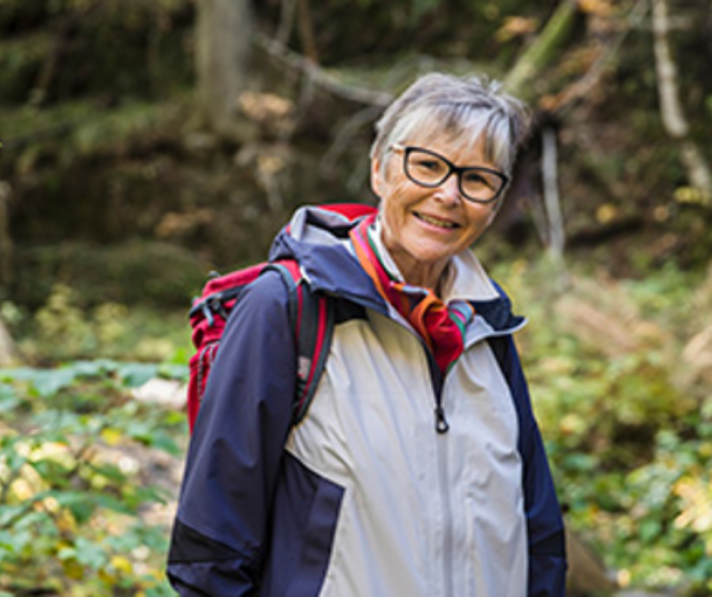Where she stands, the river runs gently as it meanders through the wooden landscape. Some birds chirp modestly nearby, but otherwise there is hardly a noise. The noise of the cars on the E6 motorway, just a few kilometers away, do not penetrate through the tall trees surrounding the river. The forest by the Ljanselva river is a quiet gem.
“The Ljanselva river means a lot to me. Walking here makes me very happy and I can breathe in a very special way,” says Trine Johnsen.
Trine has been the main driving force of the Ljanselva Environment Project since 1990 and walks along the river whenever she has a chance. She has also been active in the Oslo River Forum, or Oslo Elveforum in Norwegian, a forum for volunteer groups to help protect and reopen Oslo’s rivers and streams. She has also been a secretary of ‘Friends of Østmarka’ (part of the larger Marka forest of Oslo), which helps to preserve Østmarka as a nature and recreation area. It is clear she is committed to the natural areas of Oslo, but her commitment to the environment goes back even further.
“I have been fond of nature since I was very young – it started all the way back when my parents used to take me hiking in the Oslo Marka forest, and I’ve continued the tradition today when I take my grandchildren along for walks as a grandmother. The environment has always meant a lot to me. Everything that surrounds us, and which we are a part of - it is so important that we preserve what is natural,” Johnsen confirms.
Breathing spaces
With her fierce commitment to the rivers of Oslo, it is no wonder that Johnsen is pleased that Oslo has been awarded the title of 2019 European Green Capital.
“Our city is amazing! And I think it's great that Oslo has chosen to protect our rivers so that they can become breathing spaces sprinkled amongst the dense areas of the city,” she says.
Trine says that only a third of the city's original 300 kilometers of rivers and streams are exposed nowadays. Fortunately, the authorities have determined that, where possible, they should be allowed to run freely and be protected in the future.
“Living waterways, all the way from the Oslo Marka forest to the fjord. That is the goal of the Oslo River Forum – and that is also my own personal goal,” Johnsen points out.
Adopting rivers
There is a rich bird and animal life along and in the Ljanselva river. Almost 60 species of birds fly among the trees and there are several types of fish in the river, too.
“We have trout throughout the river and in the lower parts of the river you can also find sea trout. And then there are several other fish species living here too, such as roach, perch and minnows. We must not forget the bottom feeders either, because they are food for the fish,” Johnsen adds.
Along the Ljansevla river there is relatively untouched vegetation, rich with broad-leaved trees on the east side and spruce forests on the west side. Even though it is not a true primeval forest, the trees are allowed to fall as they please and only the hiking trails are carefully cleared.
“It's very "real", and I like that. The vegetation near a river is so important because it provides shelter for fish and the seeds become food for fish, insects and other animals that live in the river,” Johnsen explains.
This is why the city of Oslo has continued to work on reopening its rivers – reopening the waterways has been an important measure to improve the climate in Oslo and one of the many reasons it won the title of European Green Capital 2019.

